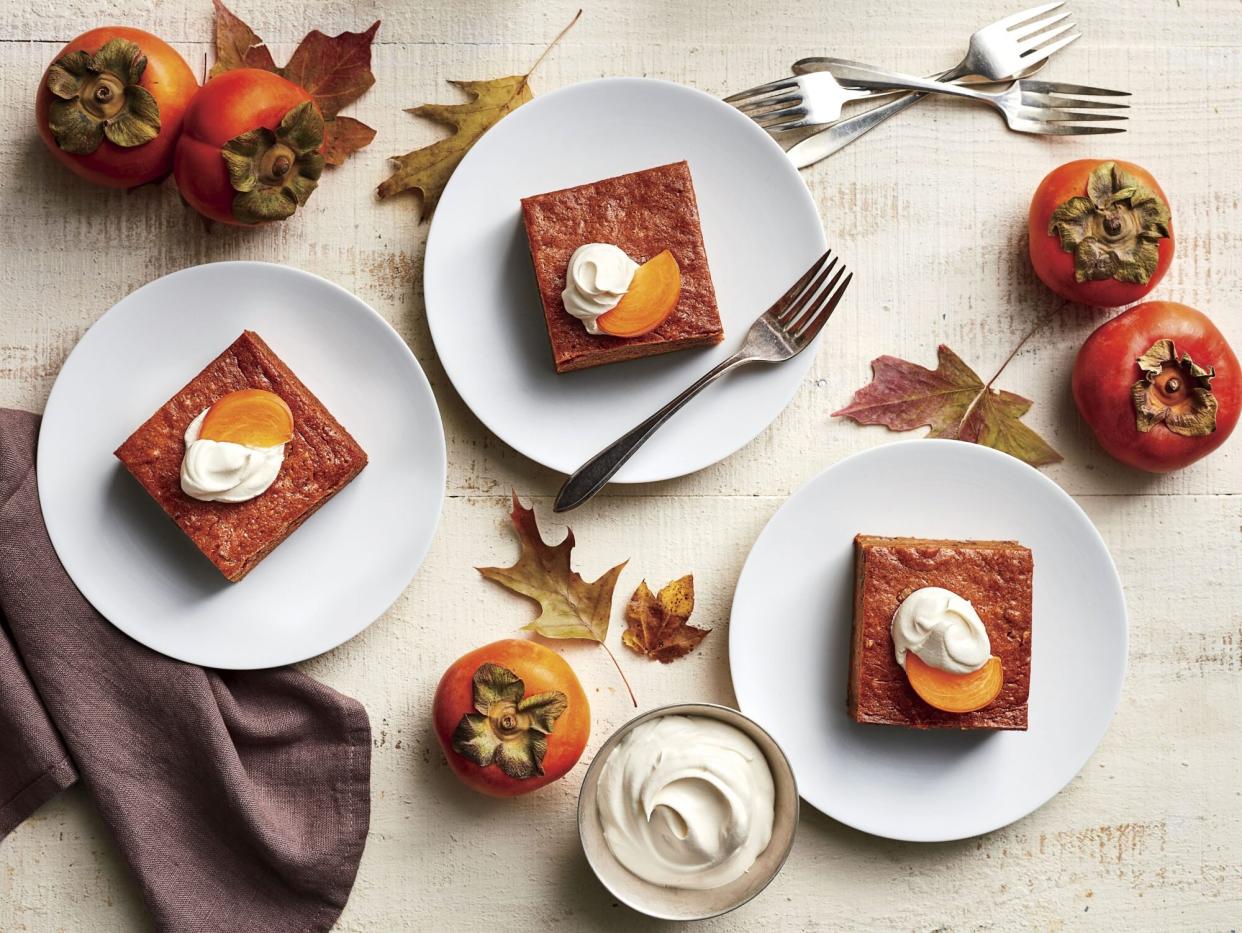Persimmon Pudding Always Takes Me Back to My Grandmother's Kitchen

Greg DuPree; Prop Styling: Audrey Davis; Food Styling: Emily Nabors Hall
TABLE OF CONTENTS
On This Page
The Simple Pleasure of Persimmon Pudding
A Seasonal Delight
Persimmon Pudding Is Global
A Culinary Reunion
I can't recall exactly when I first tasted persimmon pudding, but I do know the place: my grandmother's North Carolina dairy farm kitchen, where I spent many happy hours feasting on the simple, seasonal Southern dishes I still love to cook today.
The Simple Pleasure of Persimmon Pudding
Dense and sturdy enough to cut into squares like a brownie, Grandmother's recipe was spiced with cinnamon, nutmeg, allspice, and ginger. Its sweet flavor, moist texture, and deep brown hue pleased me greatly, even though it was rather plain compared to the monumental coconut layer cakes and decadent pies she baked for the holidays. Those were fancy prizes, while this was a quiet pleasure at the kitchen table on a cool autumn afternoon.
Her recipe for persimmon pudding is a reminder that our beloved South has unique approaches to everything. In this case, it is the traditional spoon bread that is the focus. Whether you make it scoopable or sliceable, old-fashioned spoon bread is a welcome addition to almost any meal and makes a tasty change of pace from the usual cornbread or rolls. It can be sweet or savory, and in the case of Grandmother's persimmon pudding, the selected spices are a layered experience in flavor.
A Seasonal Delight
Persimmons come into season in the fall, and wild trees thrive throughout the South on the edges of cleared fields, from Maryland to Florida and from the North Carolina Piedmont to Texas and beyond. Their branches release yellowing leaves along with plump, orange-to-umber fruit, which dangle like Christmas tree ornaments. The sweet orbs drop to the earth from mid-August through late fall, which is also when you'll find conventionally grown types at your local grocery store.
The persimmon is similar to an apricot in flavor, with a skin that is a bit tougher than an apple. A good persimmon at its peak will taste sweet, mild, and rich. Many people have described its flavor as honey-like. They have a slippery, silky texture comparable to a mango. There are a couple of ways to eat a persimmon, with skin or without. But my ultimate choice is to have this delectable fruit embedded in my grandmother's pudding.
Persimmon Pudding Is Global
Pudding is the best way to enjoy this fruit, and it's well represented in community cookbooks and family recipe boxes, though the dessert is far less popular today than it was when gardens, canning, and foraging were common and essential.
I fell in love with persimmon pudding again, two decades after enjoying it as a young girl, having moved back home to Greensboro after three years as a Peace Corps volunteer in Thailand. I had settled into daily life teaching middle school English and social studies, and (because I loved cooking) visiting the farmers' market was part of my weekly routine.
One day, I spotted it on a vendor's table, an old friend I'd nearly forgotten but recognized with pleasure even before I noticed the hand-lettered "Persimmon Pudding" sign. Rustic and deeply spiced, it tasted exactly like my own version of autumn.
A Culinary Reunion
The vibrant and dazzling flavors of Thai cooking had expanded my sense of edible wonders, but this culinary reunion reminded me of what I'd missed during my years far from home. It is often the senses of taste and smell, which work in concert together, that can take one back to a moment in time. My moment was a memory of persimmon pudding baking in my grandmother's kitchen. It was pure delight when I was a kid, and now as an adult I can not only recreate the sentimentality behind this glorious concoction, but make culinary memories of my own.
